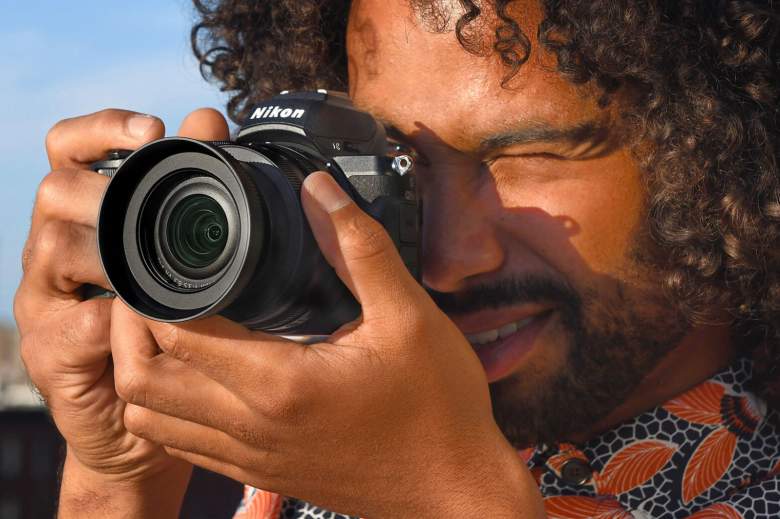
Not many camera makers can claim to have passed their 100th birthday, but Nikon did just that in 2017. The brand, standing beside Canon, is virtually synonymous with photography and makes market-leading models in every class of camera in use today, from point & shoot cameras to DSLRs (digital single-lens reflex) and mirrorless models. In fact, Nikon went in the span of just a few years from being a straggler in the mirrorless category to offering some of the best models you can buy.
Every brand has its fans, and there are people who enjoy debating the finer points of Nikon vs. Canon. That’s fine, and both companies deserve kudos. But Nikon remains laser-focused on creating outstanding cameras, unlike Canon, which has a diverse portfolio of office products in addition to cameras. Whether you’re a casual photographer looking for a fun point and shoot camera (which might lead you to the Nikon Coolpix A1000), a beginner looking for a simple DSLR, a serious enthusiast wanting to get creative, or someone who needs a full-frame DSLR for professional work (ahem, the Nikon D780), the depth and breadth of Nikon’s best cameras are here in this list.
Read on to see which of these 11 Nikons is best for you, and also check out the buyer’s guide at the end of the article.
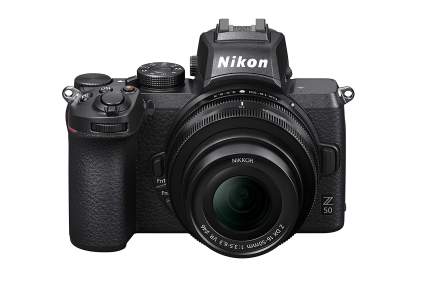
|
Amazon Customer Reviews
|
Price: $1,346.95 Shop at Amazon | Shop now Read our review |
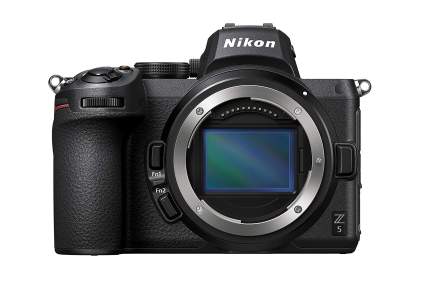
|
Amazon Customer Reviews
|
Price: $1,296.95 Shop at Amazon | Shop now Read our review |
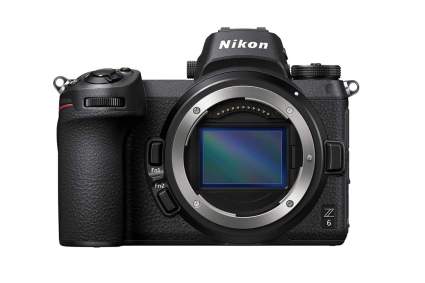
|
Amazon Customer Reviews
|
Price: $1,996.95 Shop at Amazon | Shop now Read our review |
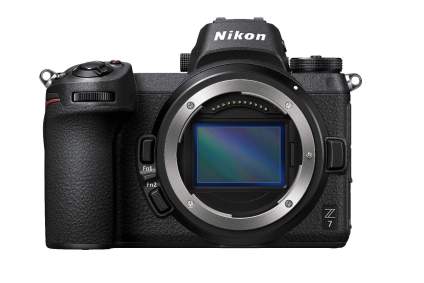
|
Amazon Customer Reviews
|
Price: $3,043.90 Shop at Amazon | Shop now Read our review |
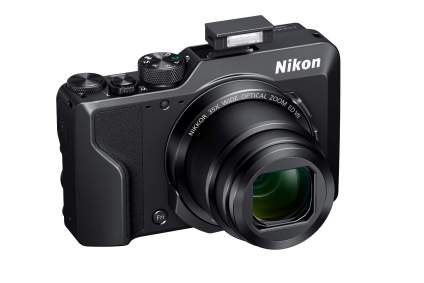
|
Amazon Customer Reviews
|
Price: $494.95 Shop at Amazon | Shop now Read our review |
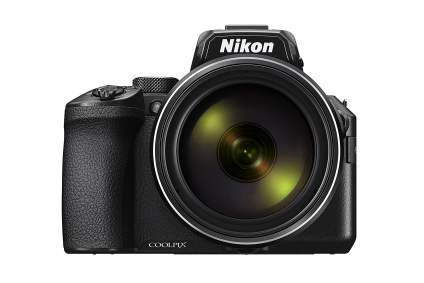
|
Amazon Customer Reviews
|
Price: $796.95 Shop at Amazon | Shop now Read our review |
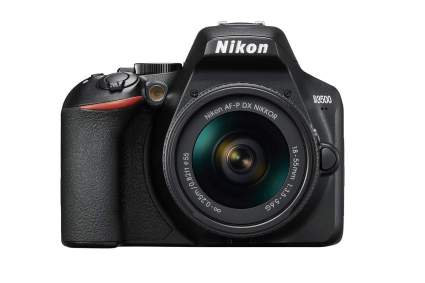
|
Amazon Customer Reviews
|
Price: $729.00 Shop at Amazon | Shop now Read our review |
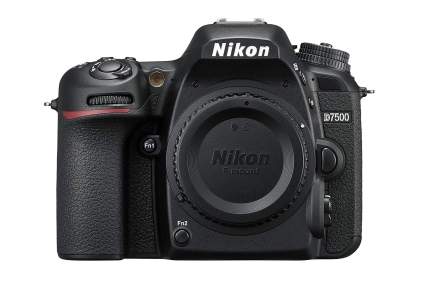
|
Amazon Customer Reviews
|
Price: $1,229.00 Shop at Amazon | Shop now Read our review |
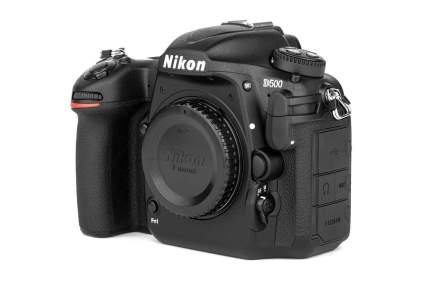
|
Amazon Customer Reviews
|
Price: $1,669.99 Shop at Amazon | Shop now Read our review |
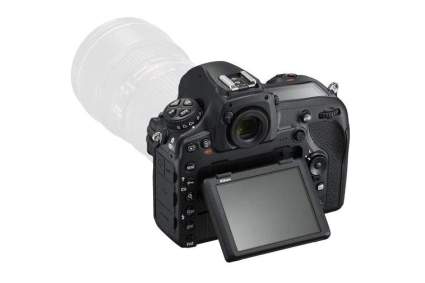
|
Amazon Customer Reviews
|
Price: $2,649.00 Shop at Amazon | Shop now Read our review |
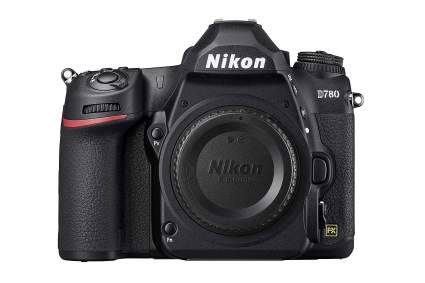
|
Amazon Customer Reviews
|
Price: $1,996.95 Shop at Amazon | Shop now Read our review |
-
1. Nikon Z50
Pros:- Light and compact for an interchangeable lens camera
- fast 11fps shooting
- Great handling
Cons:- No dual SD card slot
- Limited battery life
- No in-camera stabilization
Style: Mirrorless | Sensor: APS-C | Image resolution: 20.9 megapixels | Shooting speed: 11fps | Video resolution: 4K | Monitor: 3.2-inch articulated | Target audience: Beginner/intermediate
Nikon got a slow start in the mirrorless segment and the Nikon Z50 is the brand’s first shot at a beginner-friendly model. Using the smaller APS-C sensor, the body is small and light but feels compfortable in your hands. This camera would seem like magic to anyone used to beginner models from just a couple of years ago — it has speedy 11fps shooting, 4K video recording, Raw recording and a large 3.2-inch touchscreen display in addition to the electronic viewfinder. But it also lacks enough features that advanced enthusiasts will start to feel limited, such as the single SD card slot and no weather sealing. This camera is a part of the Z-series and so it uses the same lenses as the full-frame models liuke th Z6 and Z7, so any investment you make in glass with this camera will not be lost if you upgrade.
-
2. Nikon Z5
Pros:- Most of the guts of the higher-end Z line
- Superb autofocus system
- Good price
Cons:- Slow burst speed
- 4K video has 1.7x crop factor
- Close in price to more capable Z6
Style: Mirrorless | Sensor: Full-frame | Image resolution: 24 megapixels | Shooting speed: 4.5fps | Video resolution: 4K | Monitor: 3.2-inch articulated | Target audience: Intermediate/enthusiast
The Z50 is an excellent entryweay into interchnageable lens mirrorless cameras, but the smaller APS-C sensor size and relative lack of high-end features will stymie truly serious enthusiasts. The Nikon Z5 is another beast altogether — it’s Nikon’s entry-level model in the full-frame FX line. This is really a Z6 that Nikon has dialed back to be able to offer at a lower price, and also has some friendlier features. You get the same superb processor and 24 megapixel sensor, but Nikon replaced the top-plate LCD with a more traditional mode dial. And iunstead of 12fps, you get an anemic top continuous shooting speed of just 4.5fps.
-
3. Nikon Z6
Pros:- Fast 12 fps continuous shooting
- Excellent video modes like 120 fps slow-motion
- Excellent full-frame image quality
Cons:- Short battery life
- Single memory card slot
- Minor amounts of lag in viewfinder
Style: Mirrorless | Sensor: Full-frame | Image resolution: 24 megapixels | Shooting speed: 12 fps | Video resolution: 4K | Monitor: 3.2-inch articulated | Target audience: Intermediate/professional
The Nikon Z6 represents the “sweet spot” in Nikon’s mirrorless lineup for many photographers regardless of skill level or abilities. A step up from the Z5 and its modest 4.5fps continuous shooting rate, this camera offers 12 fps at a resolution of 24 megapixels. The autofocus system is built on 273 points, which offers plenty of flexibility for dialing in the focus point and results in fast, precise focus tracking. It also beats the pricier Z7 in a number of ways, such as better 4K video recording (the Z6 downsamples 4K video recording while making use of the full sensor, while the Z7 “pixel bins” the video, which reduces the potenial resolution. If you are a video shooter, you’ll also appreciate the camera’s 120 fps slow-motion mode in HD ands its time-lapse 4K recording.
-
4. Nikon Z7
Pros:- 45.7 megapixel sensor
- 493-point autofocus system
- In-camerra stabilization
Cons:- Only one card slot
- Pixel-binned 4K video
- Not best-in-class continuous shooting speed
Style: Mirrorless | Sensor: Full-frame | Image resolution: 45.7 megapixels | Shooting speed: 9 fps | Video resolution: 4K | Monitor: 3.2-inch articulated | Target audience: Intermediate/professional
The Nikon Z7 was, in fact, Nikon’s first mirrorless camera, and it remains the flagship model, boasting a massive 45.7 megapixels and a tight 493-point autofocus system. That said, the newer Z6 bests this camera in some inportant ways while whittling away at specs that are less important to mainstream photographers, so this Z7 is now more of a niche model, certain to appeal to pros like lanscape photographers who value the number of pixels above most other considerations. But this is a stunningly good camera if you need it (and its formidible price tag). You get in-camera shift stabilization and completely silent operation along with compelling features like the ability to shoot up to 9,999 full-resolution stills for conversion into time-lapse video along with Wi-Fi and Bluetooth connectivity.
-
5. Nikon Coolpix A1000
Pros:- 35x superzoom
- Snap-back zoom button
- Dual electronic viewfinder and tilting LCD monitor
Cons:- Only 16 megapixel images
- Electronic viewfinder is welcome, but very small
- A little bulky in your pocket
Style: Point & Shoot | Sensor: 1/2.3-inch | Image resolution: 16 megapixels | Shooting speed: 10 fps | Video resolution: 4K | Monitor: 3.0-inch articulated | Target audience: Casual/Beginners
The Nikon Coolpix A1000 is a moderaly deep superzoom point and shoot that has a respectable 35x optical zoom lens. It spans from 24mm to a formidable 840mm focal length — for the most part, there’s little this camera can’t capture, no matter how far away. At the upper reaches of the camera’s focal length, you’ll certainly want to mount it on a tripod, though, even with the camera’s integrated optical image stabilization. If that isn’t enough, you can extend it to 1680mm with Nikon’s Dynamic Fine digital zoom. Nikon includes a handy snap-back zoom button which quickly reverts to a wider zoom so you can require your subject when you’re deeply zoomed in.
You can also record video in 4K if you like, and the built-in Wi-Fi and Bluetooth mean you can transfer images easily without removing the memory card. A nice bonus you don’t often get in point and shoot cameras: This model has both the usual LCD monitor and an electronic viewfinder. Unfortunately, the camera only musters 16-megapixel images, which is uncharacteristically small for any camera these days.
-
6. Nikon Coolpix P950
Pros:- Massive 83x optical zoom
- Dual electronic viewfinder and LCD monitor
- DSLR-like handling
Cons:- Bulky and heavy
- Sluggish 7fps continuous shooting speed
- No touchscreen
Style: Point & Shoot | Sensor: 1/2.3-inch | Image resolution: 16 megapixels | Shooting speed: 7 fps | Video resolution: 4K | Monitor: 3.2-inch articulated | Target audience: Casual/Beginners
Nikon’s Coolpix P950 looks a lot like an interchangeable lens camera at a quick glance because of the monster of a barrel lens protruding from the front and the traditional DSLR form factor, with a bulbous right-hand grip. The illusion continues around back with a dual electronic viewfinder and 3.2-inch tilting LCD monitor. But it’s not a DSLR; it’s a friendly point & shoot camera that needs all the runway it can get for the lens–it’s a massive 83x optical zoom. The focal length spans from a moderately wide 24mm to a deep 2000mm. Nikon pairs that up with a really good image stabilization system so you can handhold the camera reliably for a lot of shots, but as always, if you’re shooting photos in which the effective focal length is more than the shutter speed (for example, you’re zoomed all the way to 2000mm but the shutter speed is slower than 1/2000) it’s a good idea to have a tripod. Either way, if you enjoy wildlife photography, this is the point and shoot to own.
The tradeoff is that this is a heavy beast of a camera — it weighs 2.2 pounds — and way too big for your pocket. It’s also not the most feature-packed camera; the LCD monitor isn’t a touchscreen, for example, and you only get 7fps of continuous shooting speed. But if you can live with compromises like those, this camera is a lot of fun. It feels like a real DSLR or mirrorless camera but has all the simplicity of a point & shoot, and in fact, makes a great “bridge camera” if you’re on the fence and thinking of eventually stepping up to a more advanced model. You also get wireless photo transfer via Wi-Fi and Bluetooth, and a full range of automatic and manual controls. The only real question is this: At this price, does it make more sense just to go straight to a mirrorless camera?
-
7. Nikon D3500
Pros:- Affordable price
- 24 megapixel sensor
- Good assortment of controls
Cons:- No 4K video
- Monitor not a touchscreen, doesn't articulate
- Only 11 focus points
Style: DSLR | Sensor: APS-C | Image resolution: 24.2 megapixels | Shooting speed: 5 fps | Video resolution: 1080p | Monitor: 3.0-inch | Target audience: Beginner/intermediate
The Nikon D3500 is a beginner-friendly digital SLR, and as such, occupies an interesting region at the intersection of advanced point & shoot, mirrorless and DSLR cameras. The D3500 has a small APS-C sensor so it won’t capture images as good as the full-frame DSLR models in Nikon’s lineup, and its simpler feature set puts it only a notch or so above a superzoom point & shoot like the Nikon P950. And if you’re just starting out in the world of interchangeable lens cameras, there are a lot of reasons why you might want to go mirrorless, like the Nikon Z50. If a DSLR is what you want, though, this camera is an affordable entryway, with a respectable 24.2-megapixel sensor, good 5fps continuous shooting mode, and support for Bluetooth wireless image transfers.
Where this camera might disappoint you is in the lack of 4K video recording (it tops out at 1080p HD video) and no external mic input, so all-around, this isn’t a great choice for video recording. It’s also part of an ever-shrinking club of cameras with a fixed, non-articulating LCD monitor in back. It’s not a touchscreen, either, for that matter. And the pentamirror-style reflex system means the viewfinder will be a little dimmer than what you’d get in a higher-end DSLR, but I suspect most people won’t really notice what they’re missing. On the plus side, you get a long 1,500+ shot battery life, a full array of manual, program, and automatic exposure controls, and lens cpmp[atibility if you later step up to a more advanced model.
-
8. Nikon D7500
Pros:- Excellent images with 20-megapixel sensor
- Effective 51-point autofocus
- 4K video
Cons:- Only one card slot
- Cropped 4K video
- No depth-of-field preview button
Style: DSLR | Sensor: APS-C | Image resolution: 20.9 megapixels | Shooting speed: 8 fps | Video resolution: 4K | Monitor: 3.2-inch articulating | Target audience: Enthusiast/intermediate
The Nikon D7500 has admittedly been around a while — it was introduced in 2017 — but sometimes there’s no reason to mess with a good thing. This is a mid-range camera in Nikon’s lineup, boasting the smaller APS-C sensor but packed with a wealth of compelling features that should be of interest to enthusiasts and anyone who has outgrown an entry-level camera. For example, as a significant step up from the Nikon D3500, it has a denser 51-point autofocus system that, when combined with a 180k RGB meter, makes it excellent at locking focus on faces and other points of interest effortlessly. It also tracks moving subjects as well, something less robust cameras have trouble with.
The body itself is weather-sealed for shooting outdoors in a variety of conditions, comfortable to hold and puts all the expected controls in convenient places. The camera has all the features we’d look for in a higher-end model, like a tilting touchscreen for the LCD monitor, 8 fps for fast continuous shooting, and even 4K video recording (though the video is cropped, so you don’t get the entire field of view). You also get both Wi-Fi and Bluetooth for wireless photo transfers. If you are hoping for dual card slots you’ll be disappointed, though — there is only one.
-
9. Nikon D500
Pros:- 153-point autofocus
- 10 fps shooting speed
- Top ISO of 1,640,000
Cons:- Wireless transfer not robust
- Live view autofocus is weak
- Expensive
Style: DSLR | Sensor: APS-C | Image resolution: 20.9 megapixels | Shooting speed: 10 fps | Video resolution: 4K | Monitor: 3.2-inch articulating | Target audience: Enthusiast/advanced
Nikon’s D500 is another mainstay in the company’s lineup, and while it might benefit from a refresh in some ways, for the most part, this is a formidable camera that can ably service anyone who doesn’t want to make the leap to full-frame — either because they prefer smaller and lighter cameras, appreciate that DX cameras are less costly, or even like the crop factor you get from the smaller APS-C sensor.
The D500 is built around a 20-megapixel APS-C sensor and uses the same 153-point autofocus system that you’ll find in the pro-class Nikon D850. It also captures a max of 10 fps, an impressive feat that’s faster than anything else in this price range. You can record full 4K video as well. And if you find yourself in low-light situations, you may appreciate the incredible ISO range that goes all the way to 1,640,000. That said, the highest ISO setting might be more for bragging rights than actual photography, and shooting at an ISO of about 1.5 million produces more noise than usable image. But even so, the range gives you options — lots of options.
The body is also weather-sealed and ready for any kind of shooting condition; this camera can handle;e itself as well in the field as any pro camera, bar none. Nikon includes dual memory card slots in the D500, a much-appreciated feature that seems to be getting a little rare these days. It also has Wi-Fi and Bluetooth support for wireless connectivity and remote control.
-
10. Nikon D850
Pros:- 45.7 megapixels
- Speeds as high as 9fps
- 153-point autofocus
Cons:- Expensive and heavy
- No built-in flash
- Live View autofocus is slow
Style: DSLR | Sensor: Full-frame | Image resolution: 45.7 megapixels | Shooting speed: 7 fps | Video resolution: 4K | Monitor: 3.2-inch articulating | Target audience: Professional
You’ll pay dearly for the Nikon D850, but this is the real deal — pros will depend on it and advanced shooters aspiring for the best will invest in it as well. It’s built around a full-frame sensor and has a massive 45.7 megapixels, about twice what you’ll find in other Nikon DSLRs. Backing this up is Nikon’s best-in-class 153-point autofocus system. The camera can muster 7fps (and if you add the optional battery grip, that goes up to 9fps). Of course, it’s big and heavy, weighing about two solid pounds. While the appeal of getting your hands on 45 megapixel Raw images might be intoxicating, also keep in mind that files that big require a lot of PC horsepower — and for a lot of projects you might not even need that much. The D850 can accommodate; you can work in smaller file sizes as well (both 25.5 and 11.3 megapixels).
In addition to excellent still image features, the D850 also captures 4K video. You get dual card slots for storing your work, and the camera has Wi-Fi and Bluetooth for wireless transfer. If you do a lot of flash work and rely on Nikon’s built-in flash to control off-camera flash units, be aware that Nikon has omitted the built-in flash, so you’ll need to include a separate wireless flash commander in your budget and planning.
-
11. Nikon D780
Pros:- 273-point on-chip phase detection autofocus
- Superb layout
- 12fps max shooting speed
Cons:- Expensive
- Large and heavy treaditional SLR body
- No integrated image stabilization
Style: DSLR | Sensor: Full-frame | Image resolution: 24.4 megapixels | Shooting speed: 12 fps | Video resolution: 4K | Monitor: 3.2-inch articulating | Target audience: Professional
Virtually every DSLR needs to start with the question, “wouldn’t you be better off getting a mirrorless camera?” That’s just as true of the Nikon D780 which services as the company’s flagship full-frame DSLR. It is an impressive piece of engineering and perhaps the best DSLR you can buy today. But thanks to an outstanding on-sensor phase-detection autofocus system, it has a Live View mode on the 3-inch LCD display that you can use most of the time. That makes this a sort of hybrid SLR/mirrorless camera. The real power of this system is evident when you notice that the camera can shoot 7fps through the viewfinder — but if you are using Live View, it rockets up to 12fps. This pro-level camera is big and heavy, but handles like a charm, well balanced with a huge number of controls littering the front, top and back of the body, but all smartly placed. You get dual memory card slots and USB-C charging as well.
Which to Buy: Point & Shoot, DSLR or Mirrorless Camera?
Nikon offers cameras in every major category -- point & shoot, mirrorless, and DSLR. So it helps to know where to focus your attention when shopping for a camera. Here's the difference between each.
Point and shoot cameras are the simplest to operate and can be a great choice when you want to be able to do more with a camera than your phone will allow. Keep in mind that not all point & shoot cameras are compact. All the point & shoot designation means is that it can automate the exposure process. But some -- like so-called "superzooms" -- can be as big and bulky as a DSLR and certainly won't fit in your pocket.
A good point & shoot camera can help you bridge the gap between a smartphone and an SLR. It can deliver much better image quality than a smartphone and offers advanced shooting modes to get creative in ways your phone won't allow. But by definition, point & shoot cameras generally don't always give you full manual control over exposure. Some point & shoot cameras do, and that's a great bonus feature -- but don't count on it.
The next step up is a DSLR, which stands for Digital Single Lens Reflex, and it has traditionally been the camera of choice for professional photographers and photo enthusiasts alike. It gets its name from the mechanism (a spring-loaded pentaprism or pentamirror) that diverts light from the lens to the optical viewfinder, so that you get to see more or less exactly the same image that the sensor will see when you press the shutter release. When the shutter button is depressed, the pentaprism mechanism flips out of the way and lets the sensor be exposed to the light through the lens for a moment, then flips back down so you can see through the viewfinder again.
That worked great for well over half a century, but mirrorless cameras are just what they sound like -- it's now possible to use an LCD display and electronic viewfinder to show exactly what the sensor sees without the need for any mechanical pentaprism to flip out of the way.
Even though I love DSLRs, there's little doubt that someday, mirrorless cameras will replace DSLRs completely, in the same way that digital cameras rendered film cameras extinct 20 years ago. But for the time being, and for the foreseeable future, you can choose between DSLRs and mirrorless cameras when you want something more sophisticated than a point & shoot.
Which Should You Buy: Nikon or Canon?
This is the Coke vs. Pepsi question of the camera world. People have been asking it for decades, and still ask it today. The answer is a little disappointing, though: Both companies make superb cameras, and you can be very happy with a Canon or Nikon camera. Neither brand has a secret sauce that makes your photography better or easier; you still need to learn the rudiments of photography like lighting, exposure and composition, and how to use the features that come with whatever camera you buy.
See Also:
11 Best Point and Shoot Cameras
9 Best DSLR Cameras for Beginners